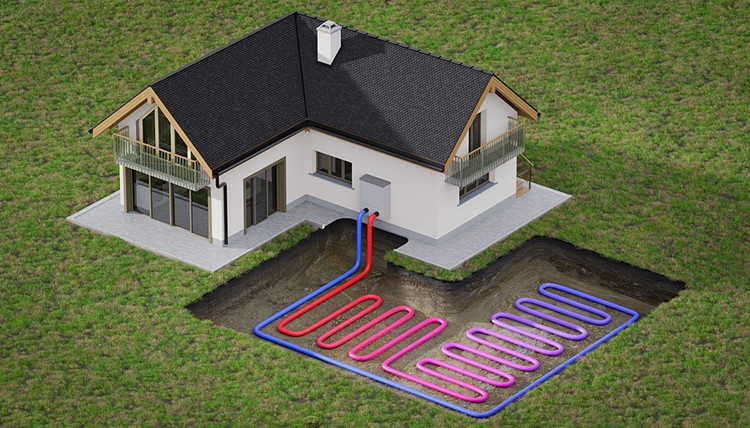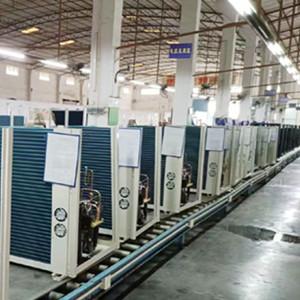Ground Source Heat Pump Advantages and Disadvantages
Geothermal energy is becoming a popular resource around the world. We use it for home heating via heat pumps. We use it in industry. Some parts of the world even have geosource power plants. It is one of the best renewable energy sources. It does not harm our environment as no greenhouse gases are produced. We have abundant resources.
Geothermal energy is harvested by drilling into the earth's surface and deep into the earth's core. Heat goes through a cycle of evaporation, compression, condensation and expansion. It can then be used within buildings for heating or cooling.
Ground source heat pump has advantages and disadvantages, let’s take a look:

Ground source heat pump advantages:
1. Geothermal is renewable and sustainable:
Geothermal energy is the heat generated by the Earth's core. This heat is unlimited and can be used over and over again, and any amount used is much less than the heat of the Earth. The resources in the geothermal reservoir recover naturally, making it a renewable resource.
2. High efficiency:
Geothermal systems are very efficient. Most systems have a COP of 3-4.5, meaning that each unit of energy used to power the system provides 3-4.5 units of heat. They are calculated to be 400% efficient. Being so efficient can save you up to 50% on your home bills.
3. Reduce carbon footprint:
If you're considering a heat pump, you're probably looking for a greener way to heat your home. Heat pumps don’t need to burn anything to create heat, so there are no carbon emissions. However, heat pumps do require a small amount of electricity. Heat pumps are considered environmentally friendly. The refrigerant used is also environmentally friendly. Another way to reduce your carbon footprint is to generate your own electricity, either using solar or wind power.
4. They improve air quality:
Your heat pump will produce clean air that won't burn anything, and the filter will remove all harmful substances such as mold and dust. Good news for asthma or allergy sufferers.
5. Low maintenance:
Heat pumps do not require a lot of maintenance. They are very reliable. There are very few moving parts in the system, which means the pump can last up to 20 years, the pipes can last even longer, and the warranty can last up to 50 years.
Ground source heat pump Disadvantages
1. Greenhouse gases:
This can be confusing because it is described as environmentally friendly and renewable. There are some greenhouse gases trapped beneath the Earth. Sometimes extracting geothermal energy releases some greenhouse gases. It takes drilling into the earth to reach the earth's heat. However, these emissions are much smaller than the man-made greenhouse gases from fossil fuels. Geothermal remains a greener option.
2. High initial cost:
Installing a geothermal heat pump in a home environment can be expensive. This is partly due to the work involved in drilling and laying pipes. However, the return on investment can be good. You can recoup your money using an RHI plan and reducing your bills over 2 to 10 years. Ground source pumps cost from £10,000 to £18,000.
3. Space:
Your property will need to provide a considerable amount of space for most systems. These systems require pipes to be laid underground in trenches. If you have a smaller space, you can opt for a vertical geothermal heat pump.
Final summary
Geothermal energy will save you money. You do need to consider what you plan to use it for and whether your property is suitable. There are many types of systems, some more suitable for underfloor heating etc. However, without good insulation, this type of heating is not cost-effective. All things considered, geothermal heat pumps are a great way to introduce green heating into your home. They are considered environmentally friendly and will significantly reduce your carbon footprint. The initial cost is high, that's unavoidable, but with the RHI and the savings you get on your bills, we think geothermal heat pumps are a great return on investment. One of the advantages of geothermal heat pumps is that no planning permission is required. Once installed, the pipe is no longer visible.





